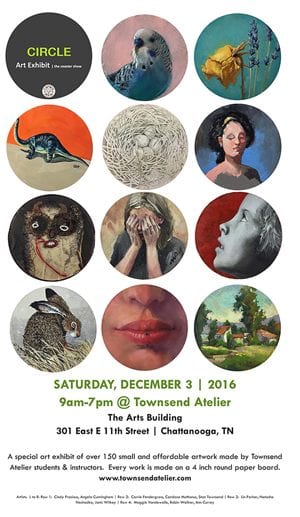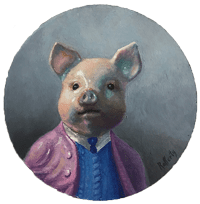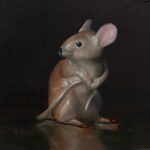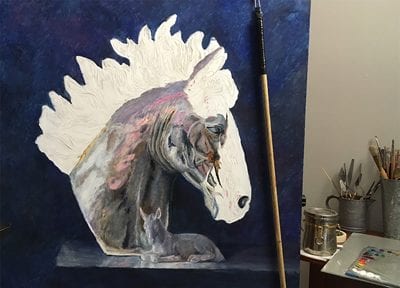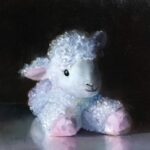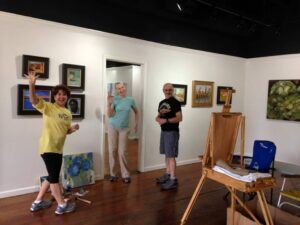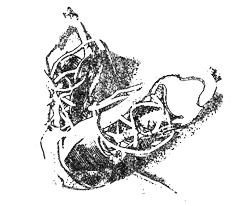
14×18 Oil
Try to visualize the waves as trends in art.
Surfers work hard to paddle out. Similarly, artists struggle to learn and find their artistic voice.
Surfers finally get to that sweet spot and catch a wave; those paddling stop to watch them glide by. Similarly, artists still in the water of obscurity see others riding a new artistic trend, yelling, “Here’s how to paint.” Those struggling are growing anxious, thinking “I should be on THAT wave.”
Some surfers ride a wave till it runs out; others get off the wave halfway and struggle back to a prime spot; still others catch a smaller wave halfway to their goal. Similarly, some artists hope they eventually catch a good wave and can ride out an easy career; others see the times changing, and decide to jump off the wave and struggle back to a sweet spot; still others choose a smaller wave halfway out, abandoning the difficulty of the struggle.
It’s an organic visual loaded with metaphor, isn’t it.
The tide that pushes against every artist is the fear that the best things are passing us by. Steven Pressfield personifies it as an enemy called Resistance in his book “The War of Art”. He says, “Resistance has no strength of its own. Every ounce of juice it possesses comes from us. We feed it with power by our fear of it. Master that fear and we conquer resistance.”
One example of an artistic trend is the American “plein air movement”. It’s on a bell curve just like everything else. It will change (already it has different regional expressions), and most likely it will, like all waves, sink in the ocean to manifest another day.

16×20 Oil
Fortunately, there’s a bigger wave building that we can be excited about—it’s the interest in art in general! There’s still a ways to go, but the swell is evident. It’s a great time to be an artist. It’s a great time to be studying and growing. It’s a great time to teach. Today’s students of art are the future art collectors. There’s an awesome set of waves coming.
The more I’m in this career, the more I feel this growing wave. I want to be out front.
If you feel it too, here’s what I recommend: know art history intimately; don’t stop studying it, and be respectful of ALL OF IT. The history we’ve been dealt is a proverbial pearl of great price. We’re not innovating; we’re standing on tall shoulders. There comes a time to wean yourself from just painting for the “love of it.” It’s something to take seriously. Look to artists that don’t appeal to you on the surface. Read about their lives. Your work will have a deeper look and meaning if you let diverse stories and styles influence you.
Degas and Corot were two artists known for this kind of profound reverence. From the book “Corot in Italy”, it was said that his great accomplishment during his formative Italian journey was to “…fuse the empirical candor of outdoor painting with the pictorial rigor of the classical tradition.” He was respectful of the traditions he came from, and yet, before nature, he looked with fresh eyes and produced work way beyond his time.
In the book Degas by Jean-Jacques Leveque, it was said, “Like Manet, he (Degas) was torn between his reverence for the past and his visions of the future.” While others like Monet and Pissaro were dismissive of the romantic traditions in the Parisian art scene, Degas was respectful of it and payed homage to it, and yet fused it with his growing love of the Impressionists broken color. He implored his peers to temper their reactionary speech.
This is important to note because some artists and art movements today want to react dismissively to the art movements of the Twentieth Century. How will we ever have real conversations with the curators of the avant-garde if we don’t have a healthy respect for what they represent? But that’s a discussion for another time.
[One way you can catch this vision is to join me and Jason Sacran in Italy the summer of 2017 as we introduce you to one of the most influential communities in the world of representational art, JSS in Civita, through our workshop “In The Birthplace of Outdoor Painting”. Go to lasaterart.com/workshops to learn more.]
Let’s get ready for the big wave! HANG LOOSE my friends.
speaker and demonstrator for the 2015 Plein Air Convention and the 2016/17 Plein Air South Conventions. He will be demonstrating at the 2017 OPA National Exhibition.


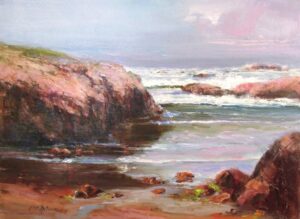
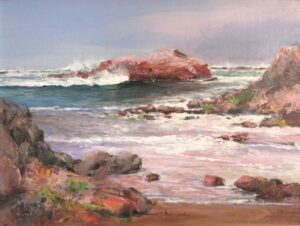
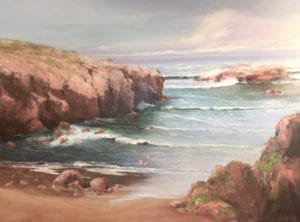
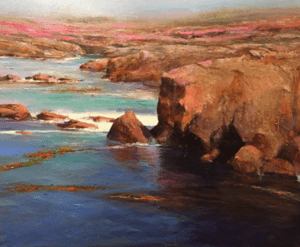


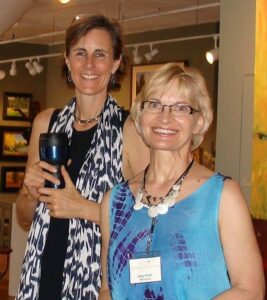

 As artists, we all experience moments of doubt along the trajectory of our career path. Moments when the sales aren’t flowing in or multiple late nights in the studio leave us second guessing our choice to follow our passion of becoming professional artists. But before you let these doubts get the best of you, see if there is an easy fix to what is keeping you from achieving your optimal success.
As artists, we all experience moments of doubt along the trajectory of our career path. Moments when the sales aren’t flowing in or multiple late nights in the studio leave us second guessing our choice to follow our passion of becoming professional artists. But before you let these doubts get the best of you, see if there is an easy fix to what is keeping you from achieving your optimal success.